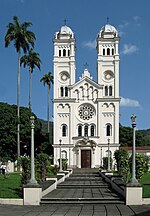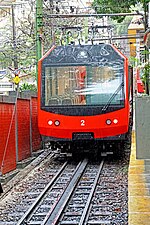Associação Civil de Divulgação Cultural e Educacional Japonesa do Rio de Janeiro
1971 establishments in BrazilAsian-Brazilian culture in Rio de Janeiro (city)Educational institutions established in 1971International schools in Rio de Janeiro (city)Nihonjin gakkō in Brazil
Associação Civil de Divulgação Cultural e Educacional Japonesa do Rio de Janeiro ("Civil Association of Japanese Educational and Cultural Dissemination of Rio de Janeiro"; Japanese: リオ・デ・ジャネイロ日本人学校 Rio de Janeiro Nihonjin Gakkō "Japanese School of Rio de Janeiro") is a Japanese international school in Cosme Velho, Rio de Janeiro, Brazil.It was established on August 2, 1971 (Shōwa 46). It opened to serve employees of Ishikawajima-Harima Heavy Industries. The student body decreased after the shipyard closed in 1994. The school was previously in Santa Teresa; the former campus became the Ginásio Experimental Olímpico.
Excerpt from the Wikipedia article Associação Civil de Divulgação Cultural e Educacional Japonesa do Rio de Janeiro (License: CC BY-SA 3.0, Authors).Associação Civil de Divulgação Cultural e Educacional Japonesa do Rio de Janeiro
Rua Cosme Velho, Rio de Janeiro Cosme Velho
Geographical coordinates (GPS) Address Nearby Places Show on map
Geographical coordinates (GPS)
| Latitude | Longitude |
|---|---|
| N -22.939518 ° | E -43.204231 ° |
Address
instituto casa Roberto Marinho
Rua Cosme Velho 1105
22241-091 Rio de Janeiro, Cosme Velho
Rio de Janeiro, Brazil
Open on Google Maps










